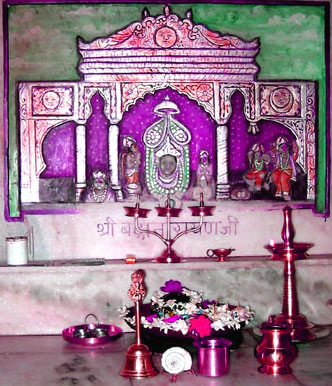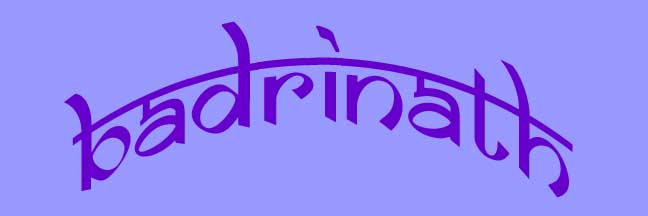 |
||||||||||||||
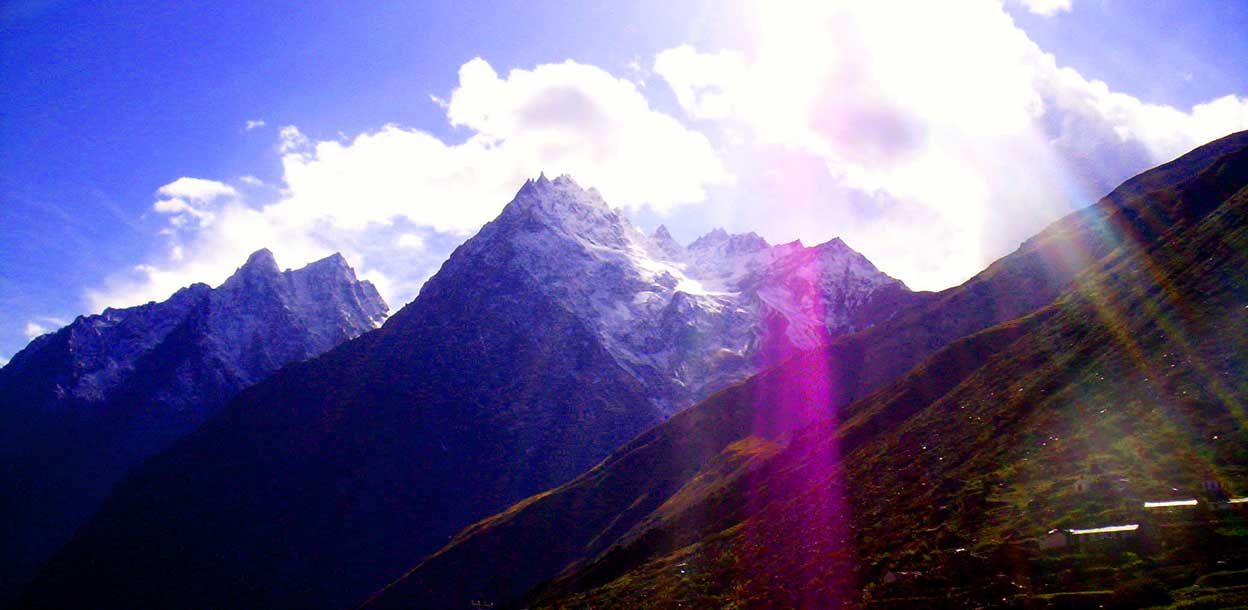 |
||||||||||||||
Nara and Narayana The Garhwal Himalayas has some of the most beautiful scenery in the world. Snow capped peaks, misty mountains, green valleys, gushing rivers, the stately devataru (deodar) forests, grassy slopes, abundant flowers and an amazing array of birds and butterflies all of which combine to make this place one of the most charming spots on this planet. It is also one of the holiest places on earth. The spiritual vibrations here cannot fail to be felt by anyone however insensitive. It is no wonder that this place is known as devabhumi - the valley of the gods. 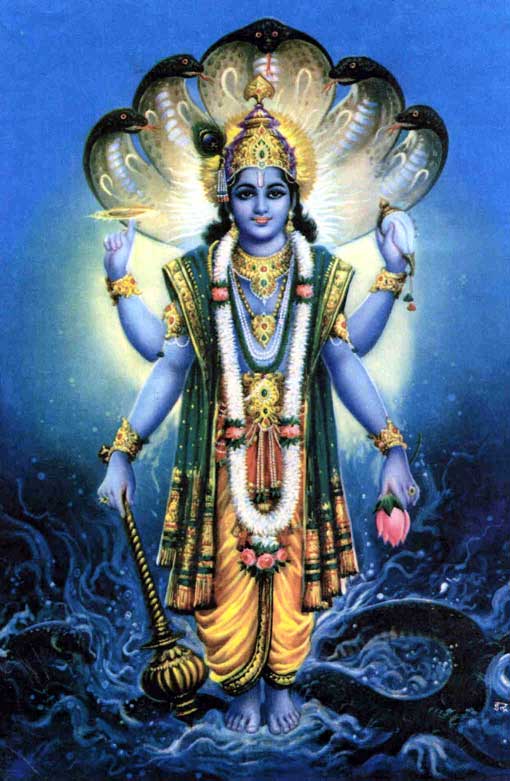 Lord Narayana Badrikashrama The four main dhams or holy shrines in the Himalayas are Badrinath, the abode of Lord Narayana, Kedarnath, the abode of Lord Shiva, Gangotri, the source of the river Ganga and Yamunotri, the source of the river, Yamuna. Of these Badrikashrama (Badrinath) is considered to be the most sacred. In the Bhagavad Purana, Lord Krishna tells his friend and devotee, Uddhava that in future he would be available only in the holy spot of Badrikashrama. He gave Uddhava his sandals and told him to carry them to Badrikashrama and keep it there for people to worship. These are to be seen even now. The Hindu scriptures say that the life of a Hindu would be incomplete without making a visit to Badrikashrama. It is the supreme place of pilgrimage especially for the Vaishnavites (worshippers of Vishnu and his avataras). According to the Padma Purana, the rishis found Uttrakhand (modern Uttranchal) to be indeed a glorious temple built by Nature for the worship of the Supreme. From time immemorial the whole of India has been linked with these holy spots by a bond of consecrated faith. Badrikashrama has a very ancient history. It dates from the Vedic period. It is a common belief that many of the Vedic hymns and the major portions of the Upanishads were sung first in this spot known as Badarikashrama. It is a place where countless sages and seers have done penance. No other spiritual place in India is called “ashrama” - a sanctuary for spiritual seekers. The whole land between Nandaprayag and Satopant is known as the Badri Vishal Kshetra. The great sages, Nara and Narayana are said to be practicing tapasya here even to this day. The Mahabharata mentions that these sages took a human birth as Krishna and Arjuna for the benefit of mankind. The Mahabharata also mentions that Krishna visited Arjuna in Badarikashrama and lived with him for a considerable period of time during their exile. The sage Vyasa also visited this spot. In fact the cave dedicated to him is close to the temple and this is where he is supposed to have written the Mahabharata with Ganesha as his scribe. It is in this cave that he collected the Vedas and divided them into four parts which he taught to four of his chief disciples. Many sages like Vasishta and Kanwa went there to meditate. Five out of the six schools of Indian philosophy wrote their treatises in this holy land. It is no wonder therefore that every Hindu considers a visit to Badrikashrama as a means of liberation from this life of transmigration. 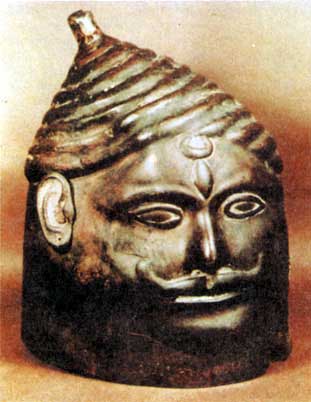 Sage Vasishta Arundati, the wife of the great sage Vasishta asked her husband to tell her of the importance of Badrikashrama. Vasishta said, “O Arundati! Even the greatest of all sinners becomes freed from all his bondages if he but has a glimpse of Sri Badri Narayana. But this holy glimpse is not so easy to get. Only one who has prayed to the Lord for a hundred births will have His darshan. Such a person is fit for liberation (moksha). Even one who utters the name of Lord Badri Narayana will be freed from all sins. One who bathes in the holy waters and offers food or flowers to the Lord and one who offers the akhand deep (the eternal light) is indeed most fortunate. All the gods will bow at his feet. O Arundati! Lord Badrinatha has the knowledge of all the Vedas and can bring one out of the darkness of ignorance into the light of wisdom”! 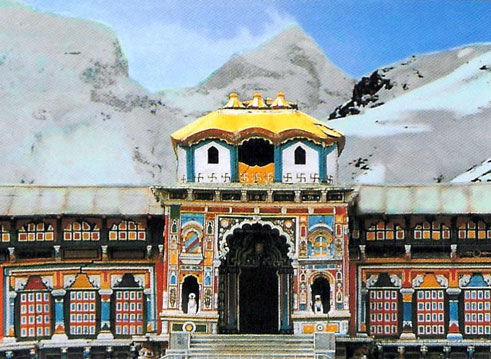 Badrikashrama Badrikashrama is situated at an altitude of 10,244 feet amidst the snowy and magnificent valley between the two mountains known as Nara and Narayana where the great sages known by these names, meditated. The temple is situated on the right bank of the river Alakananda which is another name for Ganga. The idol of the Lord here is a saligrama (type of stone) seated naturally in padmasana (lotus pose). This is the only idol of Vishnu in this yogic pose. Here he sits alone in splendid isolation without his consort and is immersed in his own atmic bliss. According to eminent historians, the temple had existed well before the period of the Mahabharata. With the advent of Buddhism, the territory surrounding this sacred place came under the influence of the Buddhists. Some zealots destroyed this ancient temple and threw the idol into the Alakananda River. It was Adi Shankaracharya, the founder of the Advaita Vedanta school of philosophy, who discovered the image in the Alakananda from the pool known as Narad Kund and installed it in the Garud Gupha near the hot water spring known as Tapta Kund. It remained here for about seven centuries. Then at the insistence of the great Vaishnava saint called Varadarajacharya, the then ruler of Garhwal made a temple at the spot where the present temple stands and had the idol installed therein. The gold canopy of the temple is supposed to have been a gift of the famous Queen, Ahalyabai of Holkar. 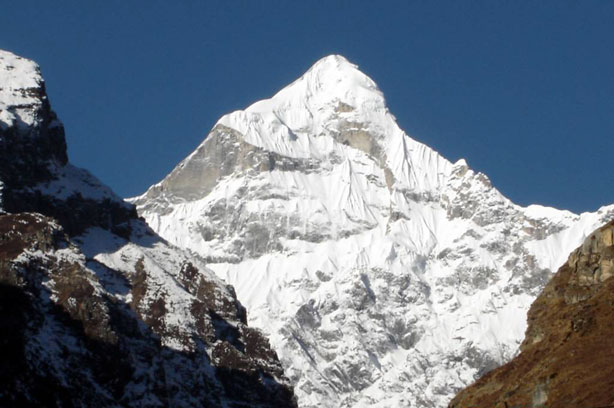 Neelkanth Narad Kund is a recess in the bed of the Alakananda River which forms a pool and is close to the Tapta Kund. It is sheltered by a projecting rock which breaks the force of the river and allows people to bathe in it. Adi Shankaracharya knew this by his great powers and retrieved the idol from this pool. He is the one who has laid down the rules by which the Lord is to be worshipped. He decreed that the Rawal or chief priest of the temple should come from the state of Kerala, far down south. He also decreed that the chief priest of the temple of Rameswaram in the south, should be from the state of Garhwal. Thus he ensured that there was a good interchange between the north and south of this holy land. This tradition is followed to this day and the Rawal of Badrikashrama is always a Namboodiri Brahmin from Kerala, the land of Adi Shankara’s birth. A short distance below the temple is the hot water pool known as Tapta Kund, fed by a sulfur spring which is said to be the abode of Agni, the god of fire. This water has a temperature of 130 degrees. To the left of this pool is the Surya Kund fed by a branch of the same thermal spring. These waters are said to be very nourishing to the body. The Alakananda flows swiftly just below these kunds and the boiling water falls into the icy waters of the river giving rise to clouds of steam. 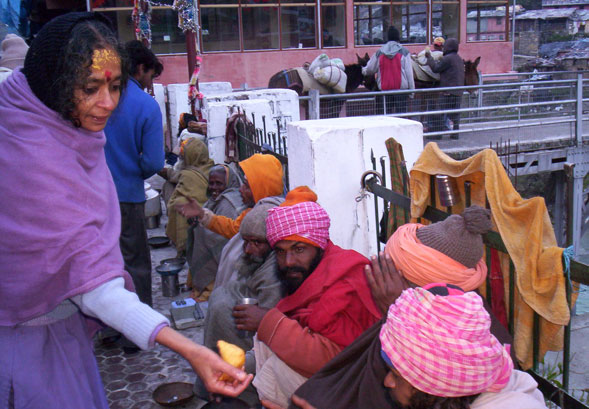 Mataji feeding the poor at Badri To the north of the temple is the spot known as Brahma Kapal where Lord Brahma is said to reside. Ceremonies for departed souls are performed here. To the west of the temple between the gaps of two mountains soars the magnificent peak of Neelkanth. It towers to a height of 21,650 feet. This was acclaimed to be the virgin queen of the central Himalayas and defied seven attempts by famous mountaineers from all over the world to conquer it. Sir Edmund Hillary was a member of the New Zealand team which failed. At last a school teacher from Rajasthan called O.P. Sharma, who was a great devotee of the Lord, accompanied by two sherpas (Nepalese mountain tribe), succeeded in conquering it. This peak has been described as the most beautiful, the most difficult and most elusive peak in the central Himalayas. It is a perfect cone and is visible only in the early morning when it is dramatically lit up by the morning sun which spotlights it. Two miles to the west of Badrikashrama towards the foothills of the Neelkanth there is a large green meadow where the foot-print of Lord Narayana is seen to be engraved on a huge rock. This is known as Charan Paduka. This meadow is dotted with flowers in August and offers an entrancing sight. One mile from Badrikashrama on the opposite bank of the river is Shesh Netra where the eye of the serpent Shesha on which Lord Vishnu reclines, is seen on a rock. 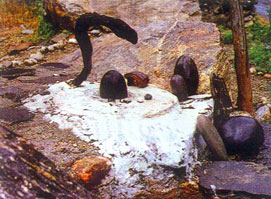 Shesh Netra There are many important places to visit around Badrikashrama. The place is replete with tales of the Pandavas who are said to have taken this route via Badrikashrama on their way to Heaven. From the temple a bridle path goes to the village of Mana which is the last village on the Indian side. From this village one path leads along the river known a Saraswati to Kailas and Manasarovar in western Tibet. This is a route which is taken only by great yogis since it is fraught with difficulties. The Saraswati joins the Alakananda at Mana at the place known as Keshava Prayag. Vyasa Gupha or the cave of Vyasa as well as Ganesha Gupha, the cave of Ganesha, is found here. If we keep going we reach a natural causeway across the Saraswati River formed by a massive mountain rock. This is known as Bhim phul. When the Pandavas came here, the second brother known as Bhima is supposed to have thrown this boulder across the river so that his brothers could cross the river with ease. The Vasudhara falls is only three miles from here but due to the rarefied atmosphere the going is difficult. These falls are over four hundred feet high and are at an altitude of 12,000 feet. The wind is so strong that someone standing just under the falls will not get wet. It is said that only the pure will feel the waters sprinkling over them. Five miles from Vasudhara is the place known as Alakapuri which is the source of the Alakananda. Here the river gushes out from between two glaciers, Bhagirath Kharak and Satopantha. Satopantha Lake is at a height of 14,400 feet and is at a distance of 15 miles from Badrikashrama and five miles from Alakapuri. It is a glacial lake three quarters of a mile in circumference bordered by clumps of bushes. Celestial beings like Apsaras and Gandharvas are supposed to sport in its icy waters. A number of glaciers encircle the lake. It is a mystic place filled with incredible charm and beauty. Only very hardy pilgrims are able to reach this. Some yogis do live on its shores. The journey to this lake takes about three days and can be done only between June and September. Every article of food and accommodation has to be taken. There are some caves in which yogis live. 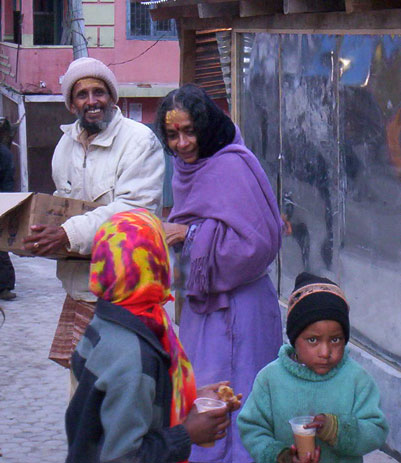 Mataji & Br. Mohan feeding the poor at Badri The Badrikashrama temple opens only for six months in summer from May to the beginning of November. After this the whole township including the village of Mana closes down for the winter. The temple is closed and the idol of Uddhava is taken down to Pandukeshwar and kept in the temple there. The eternal snows cover the temple like a blanket and no one can enter. Before the Rawal closes the door, he lights the Akhand Deep or the ghee lamp of eternity. Some special types of wicks are used and the lamp is filled with ghee. These wicks are specially made be one of the families from the village of Mana. This lamp never goes out and when the Rawal opens the holy door to the sanctum in May, all pilgrims are able to see this yearly miracle. It is said that the puja during this period is conducted by the celestial sage, Narada, the great devotee of Lord Vishnu. In olden days a few hardy yogis would choose to live next to the Tapta Kund which is the only place which is not covered with snow. Now of course there is a military headquarters in Mana so a few sentries are always on guard. 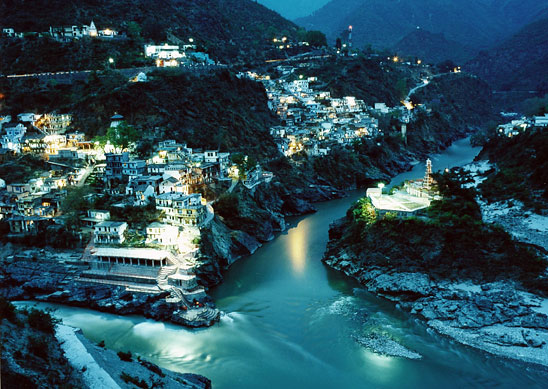 Devaprayag The pilgrimage to Badrikashrama starts from Haridwar or Rishikesh. From Rishikesh the first stop is at Devaprayag which is the confluence of the Alakananda with the Bhageerati which comes from Gangotri. The next stop is at Srinagar which is 35 km from Devaprayag. From there we go to Rudraprayag which is the confluence of the Alakananda and the Mandakini which comes from Kedarnath. The next important confluence is Karna Prayag where the Alakananda meets the Pindar River coming from the Pindar glacier. Another 32 km and we arrive at Chamoli and 18 km away we reach Pipalkoti which has some good restaurants where we can halt for lunch. Another 31 km away is the famous town of Joshimutt which is one of the four mutts established by Sri Adi Shankaracharya. There is a beautiful temple of Narasimha Murti who is the 4th incarnation of Lord Vishnu. Pilgrims going to Badrikashrama are supposed to worship here first. Legend goes that when the hand of the idol of Narasimha Murti breaks, the whole Narayana Parvat will collapse and totally cover the temple of Badrikashrama. After that all pujas and worship of the Lord will be conducted from the Narasimha temple. It is to be noted that the hand is slowly decreasing in size at the elbow! In olden times when the Rawal was taken in a ceremonial procession, he had to spend the night at this temple and apparently one of the people in the crowd would be overcome with the spirit of Narasimha (half man, half lion) and would dance with abandon and even kill a goat with his bare hands and drink the blood as Narasimha had done to the asura Hiranyakashipu. From Joshimutt the road goes down to the Alakananda and then climbs to the most picturesque village of Pandukeswar. This place has a beautiful temple called Yogadhyan Badri and this is the temple in which the idol of Uddhava is brought and worshipped during the winter months. The father of the Pandavas, known as Pandu is said to have spent the last few years of his life here. It is only 24 km from Pandukeshwar to Badrikashrama and the actual climb starts from here. It’s a very steep climb and by the time you reach Badrikashrama you find that a whole new climate awaits you. Moreover the altitude is something which may make many people sick. For those who are going for the first time it might be advisable to spend the night at Joshimutt and get acclimatized before proceeding to Sri Badri Narayana darshan. The first sight of the temple is really thrilling. It nestles like a jewel in the valley between the soaring Nara and Narayana mountains. In olden days only the famous Kali Kamli Wala guest houses existed but now Badri boasts of even a five star hotel! 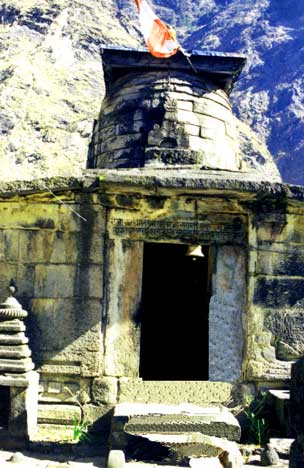 Yogdhyan Badri Temple My first visit to Badrikashrama was at the age of sixteen. I accompanied by parents on what was really one of the most thrilling trips of my life and one which was the prelude to many more trips. In fact to date the Lord has been kind enough to call me twenty-six times to this ancient spot. I often wonder what merit I had gained in a previous birth to be given this unique privilege. However of all the trips I have made the one which is still indelibly printed in my memory is my first one, fifty years ago. Now when I look back at it I amazed at the courage and faith of my parents and aunt who accompanied us. They were all brought up in a conservative Kerala family, used to great cleanliness and order. I shudder to think of the types of accommodation we stayed in, yet I never heard any of them make the slightest complaint. We come from a family of Krishna devotees and our family home is in Guruvayoor which has one of the most famous Krishna temples in India. I suspect that it is only their love and devotion to Krishna which gave them the courage to make this amazing trip. We started by train from Kerala at the end of April since we wanted to join the Rawal when he started from Rishikesh. There was no air conditioning in those days and though we had a whole compartment to ourselves, I still remember the blistering heat when the whole carriage became like an oven. We carried drinking water in mud bottles or “kujas” and my father had to dash out at stations to fill the bottle from the tap outside. Sometimes he would manage to get a big block of ice which would be kept on the floor of the compartment and helped to keep it cool for a short period. It took three days and nights to Delhi where we stayed with relations. It was my first visit to Delhi and I was highly excited. From there we took the bus to Haridwar which was really such a charming town in those days. Next stop was the Shivananda Ashram at Rishikesh. Swami Shivananda’s fame had spread all over India by this time and my parents even knew someone who had come from Kerala to take sannyasa. My memory of Swamiji is very vivid. He was sitting outside his kutir near the banks of the Ganga and a lot of devotees were seated all round him. He was most kind and hospitable and sent someone with us to show us to our rooms and gave us hints about how we should make the trip. 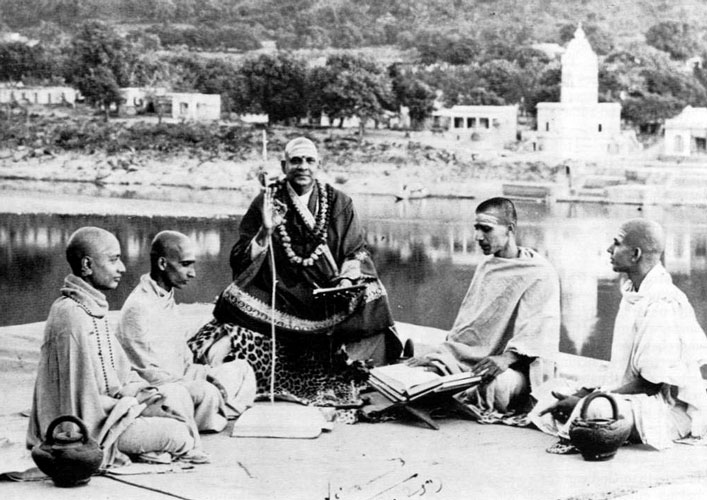 Swami Shivananda We had heard that the head of the Vasishta Gupha was a person from Kerala called Swami Purushottamananda, so we made a trip to see him. Vasishta Gupha is an amazing place. The cave is supposed to be the one in which sage Vasishta himself meditated. The vibrations of this cave were really powerful. Swamiji was a very sweet person with a long gray beard and piercing, twinkling eyes. He asked me to chant a famous Sanskrit poem written by a Kerala Namboodiri about the Lord of Guruvayoor. He seemed disappointed when I said I did not know it. One of the first things I did when I got home was to learn this verse. The next day the Rawal and his party arrived. The Rawal was coming for the first time and he was installed at a big ceremony held at the palace of the King of Tehri in the hill town of Narendranagar. This palace has now been converted into the famous spa called “Ananda”. We accompanied the party to the palace. It was a wonderful ceremony. The Rawal was seated on a throne, clad like a prince and the King himself placed the turban of authority on his head. After that there was a big feast. Then the Rawal was seated on a caparisoned horse and taken in procession. In earlier days the whole journey from Rishikesh to Badrikashrama had to be made on horseback or pony or by foot since the motor road stopped at Rishikesh. By the time we went, the road had been made right up to Pipalkoti. En route at each of the prayags or confluences, my parents would alight and have a holy dip. The confluences of all rivers are supposed to produce great spiritual energy and the custom was to bathe in all the holy waters before reaching Badrikashrama. At Pipalkoti we stayed at the Kali Kambli Walla dharmashala (guest house) which was a far cry from the normal type of accommodation which my parents had been used to I’m sure. However as I said I never heard a word of complaint from them. From Pipalkoti up to Badrikashrama which was a distance of about 80 km had to be done on foot. It must have been quite an intimidating walk for my parents but again they said not a word. We had to get a pony for my aunt who could not walk. We set off on our sacred pilgrimage filled with devotion and singing the names of the Lord. There were some sadhus and a few other pilgrims with us. It was one of the most incredible experiences I have ever had. I never felt the tediousness of the journey because of the astounding beauty of the surroundings. It was my first experience of the Himalayas and I swore to myself that one day I would return to this place and stay forever. I felt very sure that I must have lived in this place in a past life or lives – such was the impression it made on me. Almost thirty years had to pass before this dream came to reality. 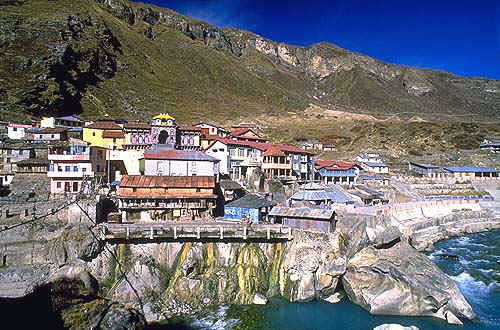 Badrikashrama on the Alakananda We took about a week to reach Badrikashrama. The Rawal’s party had long outdistanced us. The little villages en route were known as “chattis”. They boasted of nothing more than a tea shop or two. Here we would have to stay and accept whatever food they cooked for us. For me everything was strange and new and ambrosial. Each step I took with a lilt in my heart and a song on my lips. I carried an old fashioned box camera and clicked away at all the remarkable sights. I can’t explain my feelings at my first sight of the snow capped mountains. I felt that I had come home. I skipped and danced along the tracks, which wound their way up and down through grassy meadows and mossy streams and rocks. I would question every sadhu who walked with us about his experiences and was thrilled to hear their tales. They told me of a valley filled with all types of amazing flowers where the devas sported and of glacial lakes where they bathed. I was filled with a deep desire to go to these places. Little did I dream that I was destined to go to all these holy places. Badri boasted of a few wooden tea shops and of course the inevitable Kali Kambli Wallah dharmashala where we stayed. It was bitterly cold and of course there were no bathrooms. My mother regaled me with the story of one of the princesses of Kerala who had been adventurous enough to come here with her attendants. Unfortunately she went to the bushes at twilight since there were no toilets and was never seen again. She was believed to have been carried off by a leopard. I shivered with fright at this story and swore never to go to the bushes without taking someone with me. Kali Kambli Walla was a great saint. He is said to have walked up and down between these sacred shrines providing shelters for the pilgrims. He used to be clad in only a black blanket and that is why he got his name which means, the black blanket man. His name is a beacon light to all pilgrims visiting these places. Next morning we went to the Tapta Kund for our baths. I was horrified at the temperature of the water and refused to get in. My mother pushed me in without further ado and told me I was a sinner if I did not have a bath in this most holy water. I came out looking like a cooked lobster but since it was so cold outside the experience was quite enjoyable. The opening ceremony of the temple was unforgettable. In those days the temple was rather small and could hardly contain more than a dozen people out of which there were quite a few officials who had to be present at the opening of the double locks which had been sealed with wax the previous November. It was quite crowded and everyone surged forward and I was pushed to the front. I gave a gasp when the mighty doors swung open. There was a blaze of light and the Akhanda Deep, the eternal lamp, was still burning after six months under the ice! It was quite an incredible experience and my eyes filled with tears. I knew that it was certainly not the first time that I had seen this. All the hardships and discomforts of the journey were totally forgotten in this incredible sight. The Lord seemed to smile and bless me with his benign looks. I just fell on the floor in full prostration. 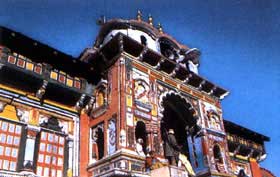 We stayed for a few days in this magic place and while my parents performed various rituals, I roamed far and wide exploring this enchanted land. My father’s classmate who had been a famous lawyer, educated in England, had suddenly given up his promising career and gone to Badrikashrama. He lived the life of a hermit in a small hut and was dressed only in sack cloth. My parents were determined to meet him even though we had heard that he was a strict recluse and often threw stones at those who came to visit him. However he allowed us to sit near him and accepted the few presents, like tea and nuts which my parents had brought him with ill grace. For some reason he took a liking to me and offered to take me to the caves of Vyasa and Ganesha and to the village of Mana. I was thrilled and trotted beside him along the narrow track while he told me of his experiences. We must have made a most incongruous couple, the old man with a grizzly beard and matted hair, clad in sack cloth and the young girl in modern clothes with a camera slung at her side. He was most scornful about the camera and told me not to act like a tourist. He said that the Himalayas revealed their secrets only to the sincere seeker who was prepared to forsake comforts for the sake of Truth! I hung my head sheepishly and tried to hide the camera. Due to this I was unfortunately unable to take his photo. He stayed for ten years including winters when everyone else went down but at last age and ill health forced him to come down. When he came to our home town he specially sent word and asked me to go and see him which I did with great joy. 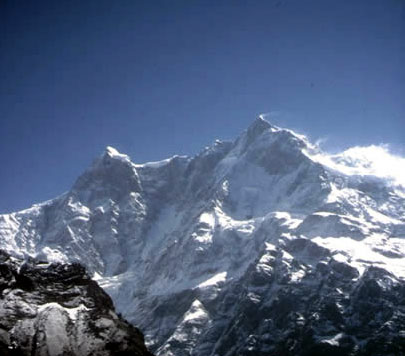 Lord Badri Narayana Our return journey was made in the same style. My heart ached to leave behind this valley of the gods. I felt their presence in every stride and swore that one day I would come back. It was only much later that I realized that they had indeed blessed me for I was able to return to their land and take up a permanent residence there. The modern pilgrim can never feel the ecstasy of a trip like that. Too many vehicles, too many comforts and too much noise seem to have driven the sensitive devas away. I remembered the words of the sage from Kerala that the seeker of Truth had to choose between comfort and spirituality! Even though I have been many, many times to this ancient shrine in the years that followed, I don’t think I ever felt the same rapture which I had on that first memorable trip! Jai Badri Vishal!
|
||||||||||||||
|







